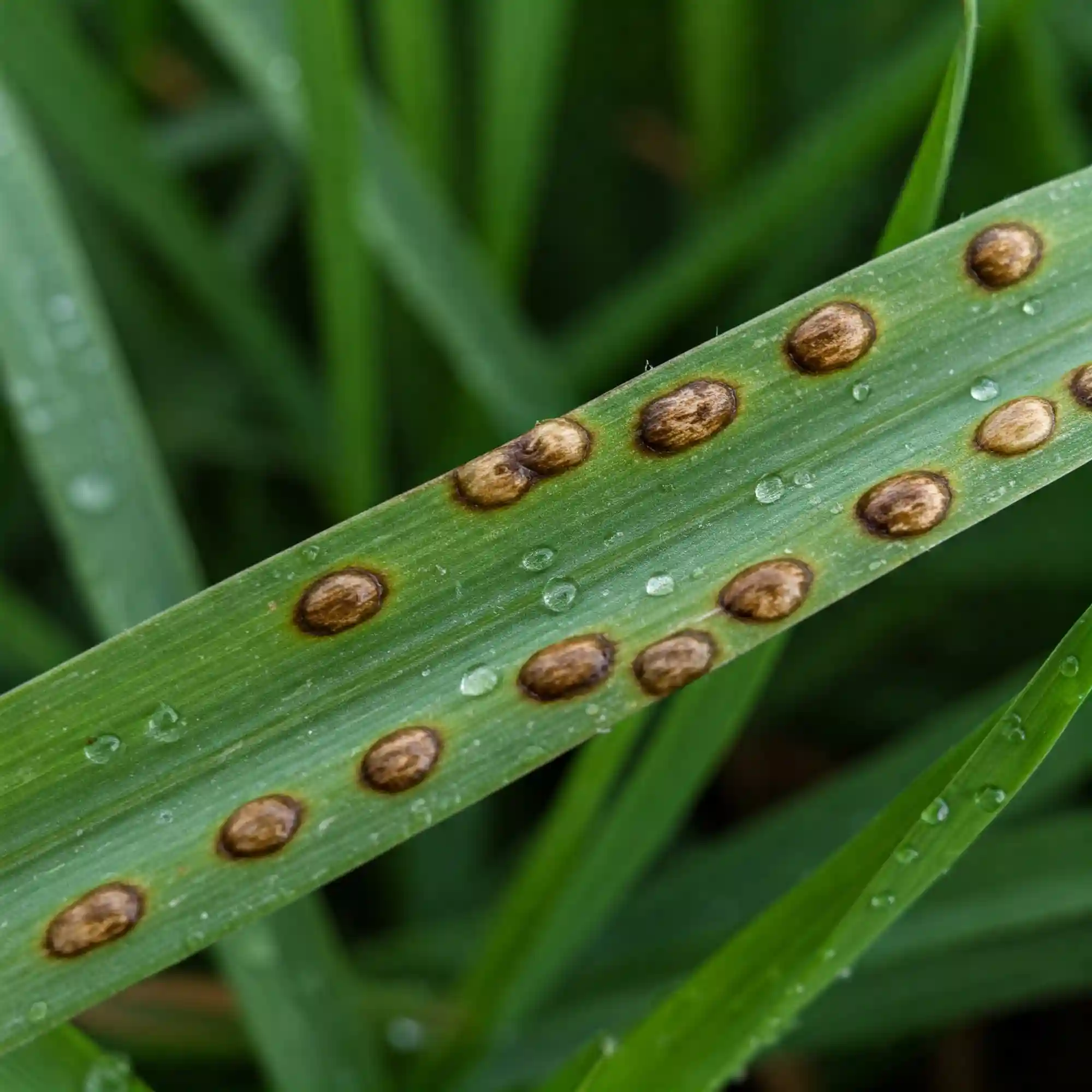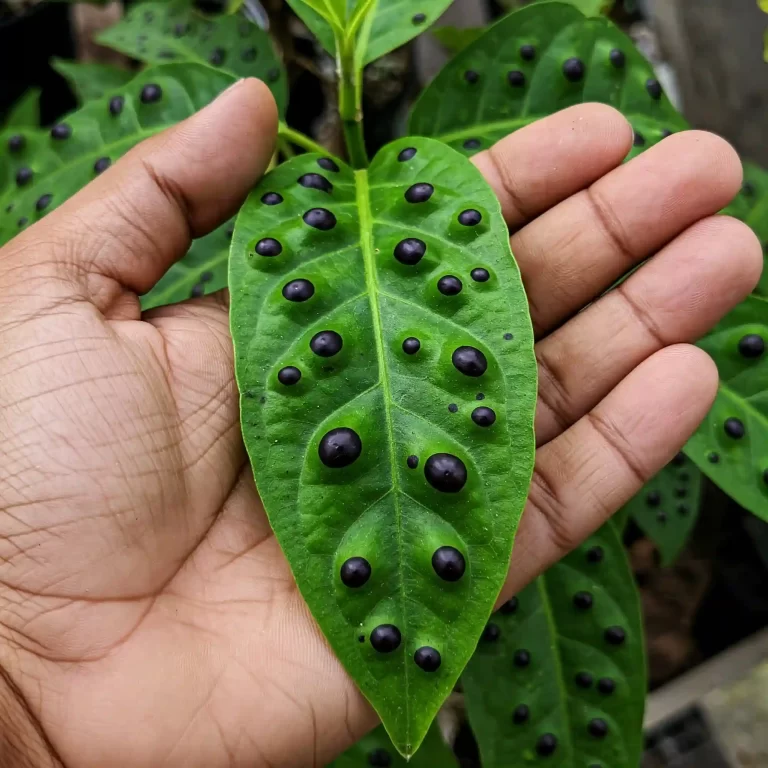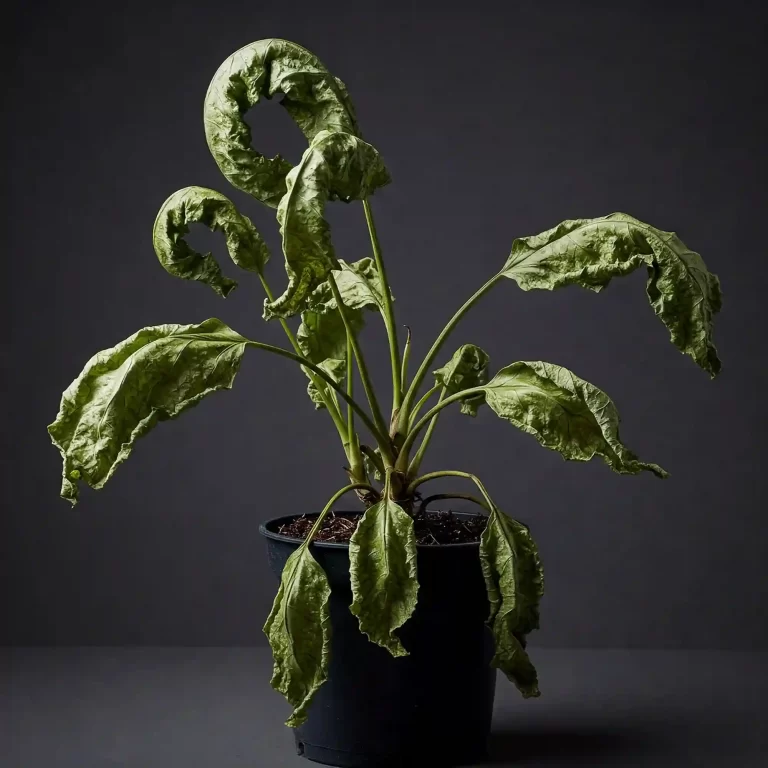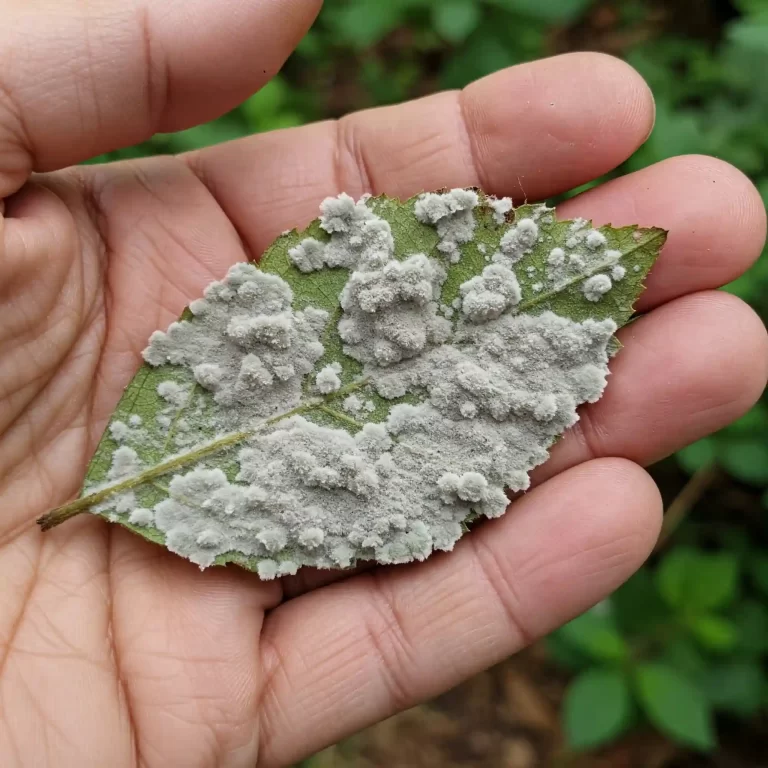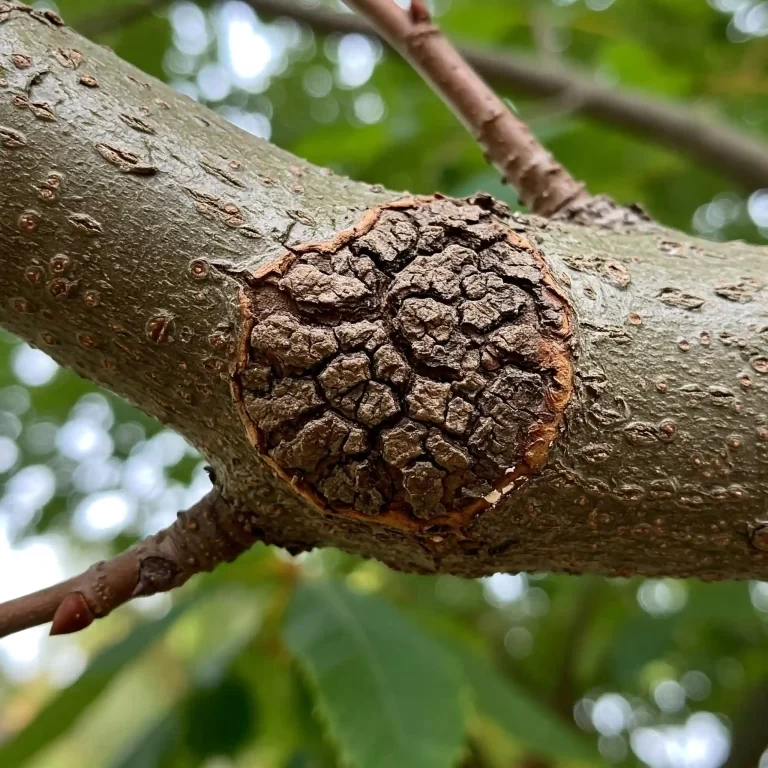Have you noticed unsightly spots appearing on the leaves of your prized plants? Are your once vibrant lawns now showing signs of decline, with patches of brown and dying grass? This can be incredibly frustrating, especially after investing time and effort into your garden. I know the feeling – you nurture your plants, providing them with water, sunlight, and nutrients, only to watch them succumb to disease. It’s disheartening to see your hard work seemingly go to waste. But don’t despair! There’s a good chance your plants are suffering from Bipolaris leaf spot, a common fungal disease. The good news is that with the right knowledge and action, you can effectively manage and even prevent this disease, restoring the health and beauty of your garden. In this comprehensive guide, I’ll walk you through everything you need to know about Bipolaris leaf spot, from identifying the symptoms to implementing effective treatment and prevention strategies.
Bipolaris leaf spot is a fungal disease that affects a wide range of plants, from the turfgrass in your lawn to important crops like corn and wheat, and even some ornamental plants. This disease, caused by various species of the Bipolaris fungus, can quickly spread under favorable conditions, causing significant damage if left unmanaged. As a gardener myself, I’ve dealt with my fair share of plant diseases, and I understand how concerning it can be to see your plants affected. That’s why I’ve put together this in-depth guide to help you understand, combat, and prevent Bipolaris leaf spot.
This guide will provide you with the knowledge and tools you need to effectively manage this disease. We will delve into the specifics of Bipolaris leaf spot, exploring its causes, symptoms, and, most importantly, the steps you can take to protect your plants. By understanding the nature of this fungal disease, you can take proactive measures to safeguard your garden and ensure its continued health and vibrancy. So, let’s dive in and learn how to tackle Bipolaris leaf spot head-on.
This introduction sets the stage by addressing the problem (plant leaf spots), agitating the concern (the frustration and potential damage), and offering a solution (this comprehensive guide). It uses a relatable tone and establishes the author’s credibility as a fellow gardener.
What is Bipolaris Leaf Spot?
Bipolaris leaf spot, a common fungal disease, is caused by various species of the Bipolaris fungus. This disease affects a wide range of plants, including turfgrass, corn, wheat, and other grasses. The disease manifests as distinct spots or lesions on the leaves of infected plants, which can vary in size, shape, and color depending on the specific Bipolaris species and the host plant.
The Bipolaris fungus thrives in warm, humid conditions and can spread rapidly through spores dispersed by wind, water, or human activity. The disease can cause significant damage to plants, reducing their aesthetic appeal and overall health. In severe cases, Bipolaris leaf spot can even lead to plant death.
Several factors can contribute to the development of Bipolaris leaf spot, including:
- Environmental conditions: Warm, humid weather and prolonged periods of leaf wetness create an ideal environment for the Bipolaris fungus to thrive.
- Plant stress: Plants weakened by drought, nutrient deficiency, or other stressors are more susceptible to infection.
- Poor air circulation: Lack of airflow around plants can create a humid microclimate that favors fungal growth.
- Overcrowding: Overcrowded plants can also restrict airflow and increase humidity, making them more prone to disease.
Understanding the causes and symptoms of Bipolaris leaf spot is crucial for effective management and prevention. By recognizing the signs of the disease and implementing appropriate care practices, you can protect your plants from this common fungal foe.
Identifying Bipolaris Leaf Spot: Spotting the Signs
Identifying Bipolaris leaf spot early is crucial for effective management. The symptoms can vary slightly depending on the host plant, but there are some common characteristics to look for. As someone who spends a lot of time observing plants, I’ve learned that paying close attention to the details is key. You should regularly inspect your plants, looking closely at the leaves for any signs of disease.
Symptoms on Turfgrass
On turfgrass, Bipolaris leaf spot typically appears as small, oval to elongated spots on the leaves. These spots are often dark brown or black, with a lighter tan or gray center. As the disease progresses, the spots may enlarge and merge, forming larger, irregular blotches. In severe cases, the leaves may wither and die back, resulting in thin, brown patches in the lawn.
Symptoms on Corn and Other Crops
On corn, Bipolaris leaf spot, also known as Northern Corn Leaf Blight, produces long, elliptical lesions that are grayish-green to tan in color. These lesions can grow quite large, up to several inches in length, and may have a characteristic “eyespot” appearance. On other crops, such as wheat and barley, the symptoms are similar to those on turfgrass, with small, dark spots developing on the leaves.
Visual Guide
Here’s a visual guide to help you identify Bipolaris leaf spot:
- Initial symptoms: Small, oval to elongated spots on leaves.
- Spot color: Dark brown or black with a lighter center.
- Lesion development: Spots may enlarge and merge, forming larger blotches.
- Severe infection: Leaves may wither and die back.
Remember, early detection is key to preventing widespread damage. If you suspect your plants may be infected with Bipolaris leaf spot, it’s important to take action quickly. In the next section, we’ll discuss effective management strategies to help you control this disease and protect your plants.
What Causes Bipolaris Leaf Spot? Understanding the Culprits
Bipolaris leaf spot is caused by various species of the Bipolaris fungus, a group of pathogens that thrive in warm, humid conditions. These fungi produce spores that are easily dispersed by wind, water, and even human activity, allowing the disease to spread rapidly from plant to plant.
The Bipolaris Fungus
The Bipolaris fungus has a complex life cycle that involves several stages of growth and reproduction. The fungus overwinters in plant debris or soil, and in the spring, it produces spores that are carried by wind or water to new host plants. Once the spores land on a susceptible plant, they germinate and penetrate the leaf tissue, causing infection.
The fungus then grows and reproduces within the leaf tissue, producing more spores that can spread the disease further. The disease cycle can repeat multiple times during a growing season, leading to severe outbreaks if conditions are favorable.
Environmental Factors
Several environmental factors can contribute to the development of Bipolaris leaf spot, including:
- High humidity: High humidity levels create an ideal environment for the Bipolaris fungus to thrive.
- Warm temperatures: Warm temperatures also favor fungal growth and development.
- Prolonged leaf wetness: Prolonged periods of leaf wetness, such as from dew or rain, can create conditions that are conducive to infection.
- Poor air circulation: Poor air circulation can trap moisture around plants, creating a humid microclimate that favors fungal growth.
Plant Stress
Plants that are stressed due to drought, nutrient deficiency, or other factors are more susceptible to Bipolaris leaf spot. Stressed plants have weakened defenses, making them more vulnerable to infection.
Understanding the causes of Bipolaris leaf spot is crucial for effective management. By recognizing the factors that contribute to disease development, you can take steps to minimize the risk of infection and protect your plants. In the next section, we’ll discuss effective management strategies to help you control this disease and keep your plants healthy.
Managing Bipolaris Leaf Spot: Effective Treatment Strategies
Managing Bipolaris leaf spot requires a multifaceted approach that combines cultural practices, organic treatments, and, in some cases, chemical interventions. As a gardener, I’ve found that a proactive approach is often the most effective way to control this disease and protect your plants. You should regularly monitor your plants for signs of disease and take action quickly if you spot any symptoms.
Cultural Practices
Cultural practices play a crucial role in managing Bipolaris leaf spot. These practices focus on creating an environment that is less favorable for the fungus and more conducive to plant health. Some effective cultural practices include:
- Proper watering techniques: Water your plants at the base, avoiding overhead watering that can create prolonged leaf wetness.
- Improving air circulation: Prune plants to improve airflow and space them adequately to prevent overcrowding.
- Thatch management in turfgrass: Remove excess thatch to improve air circulation and drainage in your lawn.
- Removing infected plant debris: Promptly remove and dispose of any infected leaves or plant debris to prevent the spread of the disease.
Organic Treatments
Several organic treatments can be effective in controlling Bipolaris leaf spot, especially in mild cases. These treatments are generally safe for the environment and can be a good option for gardeners who prefer to avoid synthetic chemicals. Some effective organic treatments include:
- Neem oil: Neem oil is a natural fungicide that can help to control Bipolaris leaf spot. Apply it to affected plants according to the manufacturer’s instructions.
- Biofungicides: Biofungicides contain beneficial microorganisms that can help to suppress the growth of the Bipolaris fungus.
Chemical Treatments
In severe cases of Bipolaris leaf spot, chemical treatments may be necessary to control the disease. Several effective fungicides are available, including:
- Azoxystrobin
- Propiconazole
- Chlorothalonil
Always follow the manufacturer’s instructions when applying fungicides and take precautions to protect yourself and the environment.
Resistant Varieties
Some resistant varieties of turfgrass and crops are available, which can be a good option for preventing Bipolaris leaf spot. Consider planting resistant varieties if you have had problems with this disease in the past.
Remember, a proactive approach is key to managing Bipolaris leaf spot. By combining cultural practices, organic treatments, and, in some cases, chemical interventions, you can effectively control this disease and protect your plants. In the next section, we’ll discuss some important tips for preventing Bipolaris leaf spot and keeping your plants healthy.
Preventing Bipolaris Leaf Spot: Proactive Plant Care
Prevention is always better than cure, and this is especially true when it comes to plant diseases. By taking proactive steps to care for your plants, you can significantly reduce the risk of Bipolaris leaf spot and other fungal infections. As a gardener, I’ve learned that consistent care and attention to detail can go a long way in keeping your plants healthy and thriving. You should make it a habit to regularly inspect your plants, looking for any signs of disease or stress.
Maintaining Plant Health
Healthy plants are more resistant to disease, so it’s important to provide them with the proper care they need to thrive. Some key aspects of maintaining plant health include:
- Proper fertilization: Provide your plants with the nutrients they need to grow strong and healthy.
- Adequate watering: Water your plants deeply and regularly, but avoid overwatering, which can create conditions that favor fungal growth.
- Regular monitoring for signs of disease: Keep an eye out for any signs of disease or stress, and take action quickly if you spot any problems.
Good Air Circulation
Good air circulation is essential for preventing fungal diseases like Bipolaris leaf spot. Proper spacing between plants and regular pruning can help to improve airflow and reduce humidity around plants.
Thatch Control
Thatch is a layer of dead organic matter that can accumulate on the surface of your lawn. Excessive thatch can create a humid environment that favors fungal growth. Regular dethatching can help to improve air circulation and drainage in your lawn, reducing the risk of Bipolaris leaf spot.
Seed Treatment
If you’re growing crops that are susceptible to Bipolaris leaf spot, consider using treated seeds. Seed treatment can help to protect seedlings from infection during their early stages of growth.
By following these preventative measures, you can create a healthy environment for your plants and minimize the risk of Bipolaris leaf spot. In the next section, we’ll answer some frequently asked questions about this disease to help you further understand and manage it.
Frequently Asked Questions (FAQ)
I’ve compiled a list of frequently asked questions about Bipolaris leaf spot to help you further understand and manage this disease. You may find yourself wondering about some of these common concerns, so I’m here to provide clear and concise answers.
- How to identify Bipolaris leaf spot on Kentucky bluegrass?
Bipolaris leaf spot on Kentucky bluegrass typically appears as small, oval to elongated spots that are dark brown or black with a lighter tan or gray center. These spots may enlarge and merge, forming larger blotches, and in severe cases, the leaves may wither and die back. - What does Bipolaris leaf spot look like on tall fescue?
On tall fescue, Bipolaris leaf spot symptoms are similar to those on Kentucky bluegrass, with small, dark brown or black spots developing on the leaves. However, the spots may be more elongated and may have a reddish-brown margin. - Best organic treatments for controlling Bipolaris leaf spot on lawns?
Several organic treatments can be effective in controlling Bipolaris leaf spot on lawns, including neem oil, biofungicides, and compost tea. These treatments can help to suppress the growth of the Bipolaris fungus and improve the health of your lawn. - Effective fungicide application for Bipolaris leaf spot on corn?
For effective fungicide application on corn, it’s important to choose a product that is labeled for control of Bipolaris leaf spot and apply it according to the manufacturer’s instructions. The timing of the application is also crucial, with the best results often achieved when the fungicide is applied preventatively or at the first sign of disease. - How to prevent Bipolaris leaf spot spread in humid climates?
In humid climates, it’s important to take extra precautions to prevent the spread of Bipolaris leaf spot. This includes promoting good air circulation around plants, avoiding overhead watering, and removing infected plant debris promptly. - Cultural practices to manage Bipolaris leaf spot in home gardens?
Several cultural practices can help to manage Bipolaris leaf spot in home gardens, including proper watering techniques, improving air circulation, and removing infected plant debris. These practices can help to create an environment that is less favorable for the fungus and more conducive to plant health. - When to apply fungicide for Bipolaris leaf spot on wheat crops?
The timing of fungicide application on wheat crops is crucial for effective control of Bipolaris leaf spot. The best results are often achieved when the fungicide is applied preventatively or at the first sign of disease. Consult your local extension service for specific recommendations on timing and application rates. - Treating dark brown spots caused by Bipolaris leaf spot on grass?
The dark brown spots caused by Bipolaris leaf spot on grass can be treated with a combination of cultural practices, organic treatments, and, in some cases, chemical interventions. This includes proper watering techniques, improving air circulation, removing infected plant debris, and applying appropriate fungicides. - Controlling necrotic lesions from Bipolaris leaf spot on turf?
Necrotic lesions from Bipolaris leaf spot on turf can be controlled by a combination of cultural practices, organic treatments, and, in some cases, chemical interventions. This includes proper watering techniques, improving air circulation, removing infected plant debris, and applying appropriate fungicides. - Bipolaris leaf spot treatment for perennial ryegrass in spring?
In the spring, perennial ryegrass is particularly susceptible to Bipolaris leaf spot. To prevent and treat this disease, it’s important to follow good cultural practices, such as proper watering and fertilization, and apply appropriate fungicides if necessary. - Preventing Bipolaris leaf spot on corn seedlings in warm weather?
Corn seedlings are particularly susceptible to Bipolaris leaf spot in warm weather. To prevent this disease, it’s important to plant resistant varieties, use treated seeds, and avoid excessive irrigation.
Conclusion
Bipolaris leaf spot is a common fungal disease that can affect a wide range of plants, from turfgrass to crops to ornamentals. While it can be a serious problem, with the right knowledge and action, you can effectively manage and even prevent this disease.
In this comprehensive guide, I’ve covered everything you need to know about Bipolaris leaf spot, from identifying the symptoms to implementing effective treatment and prevention strategies. I’ve shared my own experiences as a gardener and provided you with practical tips and advice to help you protect your plants.
Remember, early detection is key to preventing widespread damage. Regularly inspect your plants for signs of disease and take action quickly if you spot any problems. By combining cultural practices, organic treatments, and, in some cases, chemical interventions, you can effectively control Bipolaris leaf spot and keep your plants healthy and thriving.
I encourage you to use this guide as a reference and to continue learning about plant health and disease management. By staying informed and proactive, you can create a beautiful and thriving garden that you can enjoy for years to come.
I hope this guide has been helpful. If you have any further questions about Bipolaris leaf spot or other plant health issues, please don’t hesitate to reach out to me or your local extension service.
Remember, a healthy garden is a happy garden!
